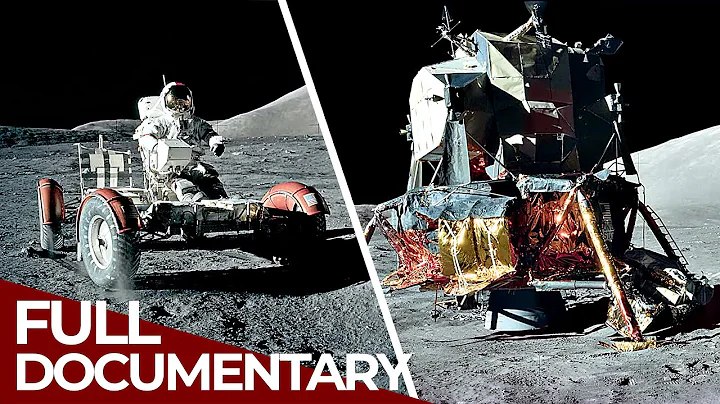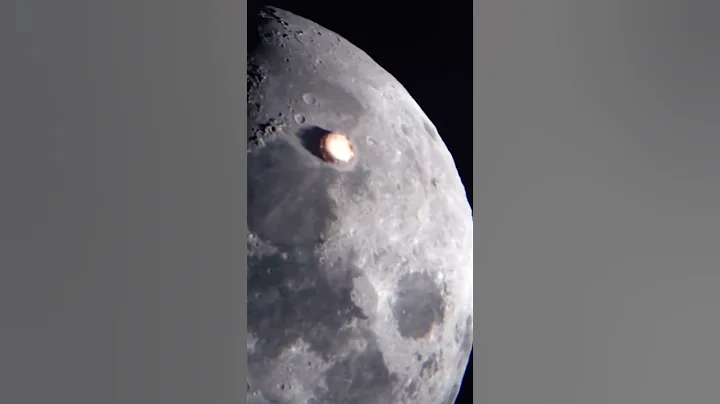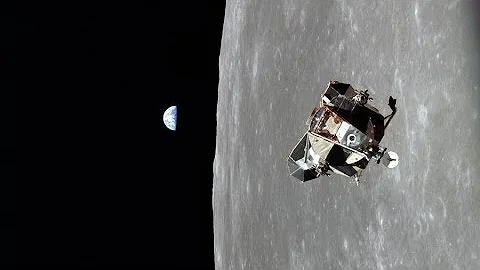The moon is the closest celestial body to the earth, and it is also the farthest celestial body that human beings have reached so far. With its close relationship with the earth, unique spatial location and broad scientific research and exploration prospects, the moon has attracted all the major space powers in the world. .
Although 50 years have passed since the Apollo manned moon landing program implemented by the United States in the last century, human exploration of the moon has never stopped. Especially from the 1990s to the present, lunar exploration has formed the second wave of In this process, the Chang'e lunar exploration project implemented by our country was the most outstanding, which brought lunar soil back to the earth again after decades.

In order to carry out in-depth exploration of the moon, many countries in the world are no longer satisfied with retrieving soil from the moon. Some major space powers have proposed manned moon landing plans. The United States, Russia, China, European Space Agency Countries such as China, Japan and India have also proposed the concept of building a permanent lunar foundation on the south pole of the moon. So, many friends may be wondering. The surface of the moon is so big, why do these major space powers have to "get together" to build bases at the south pole of the moon?
Let’s first take a look at the main ideas of these space powers in building lunar bases. The first is the United States. The plan to support manned return to the moon is the "Artemis Plan". The plan mainly includes two aspects. One is to send four astronauts to the moon again around 2024, and the other is to It is to build a permanent lunar base on the south pole of the moon. Before building the base, it is necessary to build the "Deep Space Gate" lunar orbiting space station by 2026. The final construction time of the base now looks like it should be in the range of 2028-2030.

Let’s look at Russia again. According to the latest 10-year space plan, Russia will implement the Luna-25 lunar south pole landing mission, Luna-26 lunar exploration mission and Luna-27 lunar south pole landing patrol mission by 2025, and build a lunar south pole by 2030. A lunar base that can accommodate 12 people. Affected by the economic downturn and the recent international situation, Russia's previous plans to cooperate with the United States to build the "Deep Space Gate" lunar orbiting space station and to cooperate with the European Space Agency to carry out the Luna-Grunt lunar south pole sampling return mission are likely to be stranded. , previously the person in charge of the Russian Space Agency stated that they will rely entirely on the strength of their own country to overcome the above-mentioned difficulties in order to achieve the goal of in-depth exploration of the moon as scheduled. Judging from the current situation, the lunar exploration missions of Russia, the United States, and the European Space Agency may be delayed to a certain extent.

Let’s look at our country again. Judging from public information, our country’s lunar base construction plan is divided into three major stages, namely, short-term, mid-term, and long-term tasks. The first stage is to launch Chang'e 6 , 7 and 8 probes to the moon in the next few years. The goal of Chang'e 6 is to return samples from the lunar south pole; Chang'e 7 will collect the topography and landforms of the lunar south pole. Comprehensive detection of rock and soil composition; Chang'e 8 is to carry out in-depth technical verification for the construction of a lunar base. After these tasks are completed, our country will build the first international scientific research station on the moon around 2030.

my country’s second phase mission is to build an international lunar scientific research station that can be expanded in a targeted manner as needed, between 2030 and 2035, based on the previous phase of work, and has the capabilities to have astronauts for a long time. On-duty, long-term continuous automatic operation function.
The third phase is the comprehensive construction phase of a comprehensive, three-dimensional and highly mature permanent lunar base. The time is planned to be between 2036 and 2045. After completion, it will be possible to have more astronauts stationed at the same time and comprehensively carry out related work. Scientific research can also achieve the goal of sustainable development and utilization of lunar resources.

Judging from the current situation and the history of space exploration, every step of our country's space exploration is strictly implemented in accordance with the established plan, and the plans and plans are connected with each other, the key points are highlighted, and the coordination and connection between them are very good. Strong and extremely operable, coupled with the meticulous, tenacious and self-improvement style and spirit of our country’s aerospace scientists, they have promoted the development of our country’s aerospace industry step by step, and achieved one after another that has amazed the world. Results. And these are unmatched by other countries.

In contrast, the Artemis program in the United States was riddled with problems and loopholes during the first phase of its implementation. Even the rocket test failed four or five times in a row. It can be expected that they want to build a lunar base in 2030, which can be said to be uncertain. There are many factors and great difficulties, and it is very likely that it will not be realized.
No matter which country can complete the feat of landing on the moon first, let’s analyze one of the core issues here, which is also what people are confused about. That is why these major space powers choose to land on the south pole of the moon. What about building a base? I think there are mainly the following reasons:
The first is that the "innate conditions" of the moon's south pole are superior. The South Pole of the Moon is home to the largest basin in the solar system - the Aitken Basin, with a diameter of an astonishing 2,500 kilometers and a deepest depth of 12 kilometers. This basin is composed of an unusually large crater, which still retains its original shape. Impact structure, and the material ejected from the depths of the moon due to the impact is not found in other areas. Moreover, there are a large number of large-scale abandoned lava pipelines under the moon's Antarctic strata. These characteristics provide favorable conditions for us to study the internal structure and evolution of the moon and build a place that can effectively withstand low temperature and high-energy radiation.

Second, it has abundant water resources. There are a large number of permanent shadow areas in the south pole of the moon. The temperature in these permanent shadow areas is extremely low, even reaching minus 200-240 degrees Celsius, so the interior may contain very rich water ice resources. According to the detection results of the U.S. Lunar Reconnaissance Orbiter over the Antarctic in 2009, it is estimated that the water content in the permanent shadow area may be as high as about 6%. These abundant water resources can not only provide necessary material support for the long-term stay of astronauts, but also provide guarantees for base construction, energy supply, resource development, etc., and have important strategic value.

The third is that it can significantly reduce energy supply. Since there is an angle of 1.54 degrees between the equatorial plane of the moon and the ecliptic plane, in the area between 88.4º and 90º south latitude, there will be polar day and polar night for about half a year in each "lunar year". During the polar day period, In some areas of Antarctica, the "annual proportion" of light energy is very large, reaching 80% or even 90%. This characteristic of continuous light provides natural energy for scientific exploration and research in this area. supply".

In addition, helium 3 resources are also very abundant in the Antarctic basin, and helium 3 is currently the best raw material for controlled nuclear fusion . Helium 3 resources on the earth are very few and have been proven The reserves that can be mined are only 500 kilograms, while the reserves on the moon are as high as 1 million tons, which is 2 million times that of the earth. Conducting relevant development demonstrations on lunar helium-3 resources is also an important factor in building a lunar base.

In summary, further exploration and development of the moon is of very important and practical significance to human space exploration. In addition, the moon is also the best springboard and transfer station for deep space exploration. Building a base at the lunar south pole will Overall, it has obvious advantages and outstanding functions. This is why the world's major aerospace countries are targeting it.





















